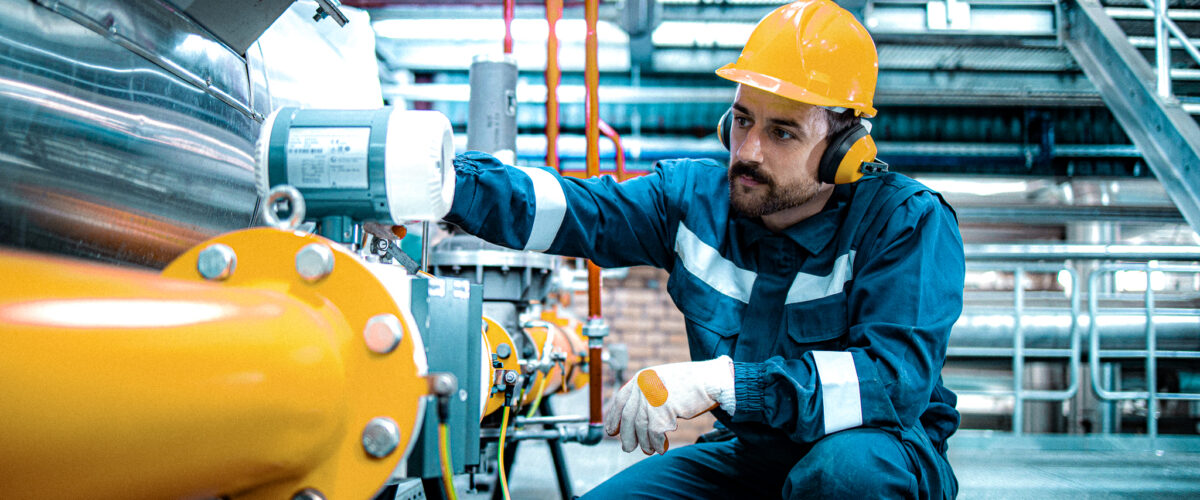How Often Should Sensors Be Calibrated To Stay Compliant With Safety Codes?
When it comes to gas detection and monitoring, calibration is not optional. If you want to meet safety standards, protect your employees, and stay compliant with safety codes, your sensors need to be calibrated on a regular schedule.
How often? The answer depends on your industry, the type of detector you use, and the specific gases you are monitoring. While OSHA, ANSI, and NFPA provide guidance, they often leave the final decision to manufacturers and industry-specific codes.
Calibration Procedures and Process
Calibration is more than just a quick check.It involves exposing the gas detector to a known concentration of gas, such as zero gas or a span calibration gas, and adjusting the readings to match the actual gas concentration. The goal is to make sure your detectors are giving accurate measurements every time.
Hawk follows manufacturer guidelines and industry regulations, using only NIST-traceable calibration gases. We also bring the right equipment for the job, including regulators, tubing, and specialty adaptors. Skipping these steps or using the wrong tools can lead to inaccurate readings, failed audits, or a false sense of security.
OSHA, ANSI, and NFPA Guidance on Calibration Intervals
OSHA Recommendations
OSHA does not set a specific calibration frequency. Instead, it requires that gas detectors be maintained and calibrated according to manufacturer instructions. Under the General Duty Clause, failing to calibrate properly can be viewed as providing an unsafe workplace.
ANSI/ISA Standards
ANSI/ISA 92.0.01 recommends calibration intervals based on environmental conditions, how often the detectors are used, and manufacturer recommendations. Depending on the application, calibration may be required before each use or at intervals such as every 30 or 90 days.
NFPA Requirements
NFPA 720 (for carbon monoxide detection) and NFPA 55 (for industrial gases) require detectors to operate correctly, which includes proper calibration. These standards are especially important when detectors are integrated with life safety systems or fire suppression controls.
Why There Is No One-Size-Fits-All Rule
Different facilities have different risks. In parking garages, calibration might happen once a year. In distribution centers with the same gases, it may be every six months because employees spend more time in the area. In environments with highly toxic gases like hydrazine or phosphine, calibration can be required much more frequently because even a small error in measurement can be dangerous.
Hawk helps clients choose calibration intervals based on gas type, detector technology, environmental conditions, and risk level. The goal is not just to pass inspection but to ensure safety and reliability.
Bump Testing and Verification
Bump testing is not a substitute for calibration, but it can be a critical step in the process.
A bump test briefly exposes the detector to a known concentration of gas to confirm that it responds and alarms correctly. It is typically done to activate and verify alarms and should take no more than a minute.
We see too many facilities relying only on bump tests and skipping calibration. This can leave them out of compliance and at risk during an audit.
Full Calibration and Maintenance
Full calibration checks the detector’s accuracy across its detection range and makes adjustments if necessary.
For fixed systems, Hawk often calibrates every three, six, or twelve months depending on code requirements and risk factors. Unlike fixed gas detection systems, portable detectors are typically calibrated monthly and bump tested before each use.
We also recommend emergency calibration after certain events, such as exposure to high gas levels, prolonged shutdowns, or major environmental changes. Skipping this can allow inaccurate readings to persist for months.
Documentation: Your Proof of Compliance
During an audit, your paperwork can be as important as the detectors themselves.
Hawk ensures clients maintain calibration dates, sensor replacement dates, gas bottle lot numbers and expiration dates, and proof that the sequence of operation has been tested.
In one case, a client faced an employee safety complaint. Because Hawk could produce a recent calibration report, OSHA accepted it as proof the system was working properly and no unsafe exposures had occurred.
Common Mistakes That Can Fail an Audit
- Calibrating with the wrong gas concentration or balance gas (nitrogen vs air)
- Using ambient air as the zero gas when low levels of target gas are present
- Continuing to calibrate sensors past their expected lifespan
- Buying low-cost “spray bottle” gases that can damage sensors
These errors not only cause inaccurate readings but can also create real safety hazards.
Hawk’s Approach to Safer, More Reliable Calibration
We often meet facility managers who believe that as long as the detector powers on, it is fine. In reality, that approach can lead to shutdowns, fines, or liability claims when you cannot prove the system was functioning correctly.
Hawk’s calibration program regularly uncovers hidden faults. One example was a refrigerant leak detection system in a chiller room that seemed fine until we calibrated it. The very next day, the alarms activated, showing a dangerous leak that could have harmed employees or damaged equipment.
Staying Compliant and Safe With Calibration
There is no single calibration interval that works for every facility. OSHA and other agencies defer to the manufacturer and industry-specific codes, which means the right schedule depends on your environment and risk level.
Full calibrations are essential for reliable gas detection and monitoring. Hawk can remove the guesswork from compliance with turnkey service plans, detailed documentation, and expert guidance tailored to your site and industry.
Contact Hawk Equipment Services today to set up a calibration program that keeps you compliant, safe, and audit-ready.

